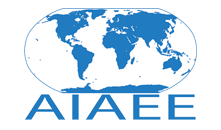Keywords
motivation; Q methodology; study abroad; university agriculture students
Abstract
The study’s purpose was to understand Louisiana State University freshman agriculture students’ projected motivations to study abroad. To achieve this, we used a Q methodological approach. When viewed through the lens of the expectancy-value model of achievement motivation, findings suggested students’ motivations could be interpreted through three typologies: (1) Goal-Oriented Students, (2) Social-Oriented Students, and (3) Learning-Oriented Students. In particular, the Goal-Oriented Students expressed they were motivated to enroll in a study abroad course because they perceived it could enhance their educational and career-related ambitions through personal growth. Meanwhile, Social-Oriented Students articulated that the social dimensions of study abroad courses, i.e., networking, relationship building, and opportunities to experience a new culture, served as their primary motivation. Finally, the Learning-Oriented Students reported their desire to gain more agricultural knowledge, experience an alternative method of instruction, and learn to work with diverse populations provided intrinsic value and encouraged them to study abroad in the future. As a consequence, this study’s findings not only broaden the study abroad literature but also provide implications for university administrators and faculty to better accommodate students through recruitment and programming tailored to their motivational needs.
Rights Statements
This Item is protected by copyright and/or related rights. You are free to use this Item in any way that is permitted by the copyright and related rights legislation that applies to your use. For other uses you need to obtain permission from the rights-holder(s).
Recommended Citation
Roberts, R.,
Rampold, S. D.,
Ramage, R.,
&
Komunjeru, B.
(2020).
A Typology of University Agriculture Students’ Projected Motivations to Study Abroad: An Application of Q Methodology.
Journal of International Agricultural and Extension Education, 27(3), 59-74.
DOI: https://doi.org/10.5191/jiaee.2020.27359



